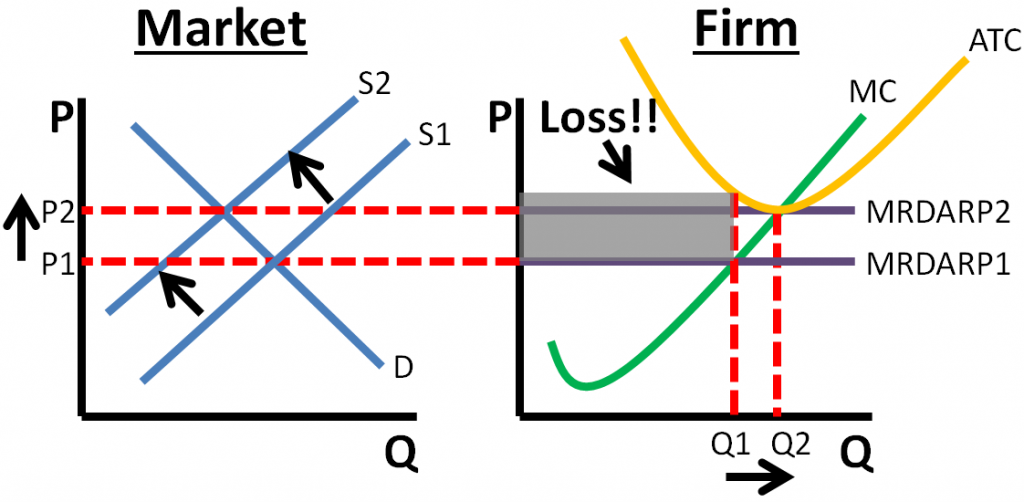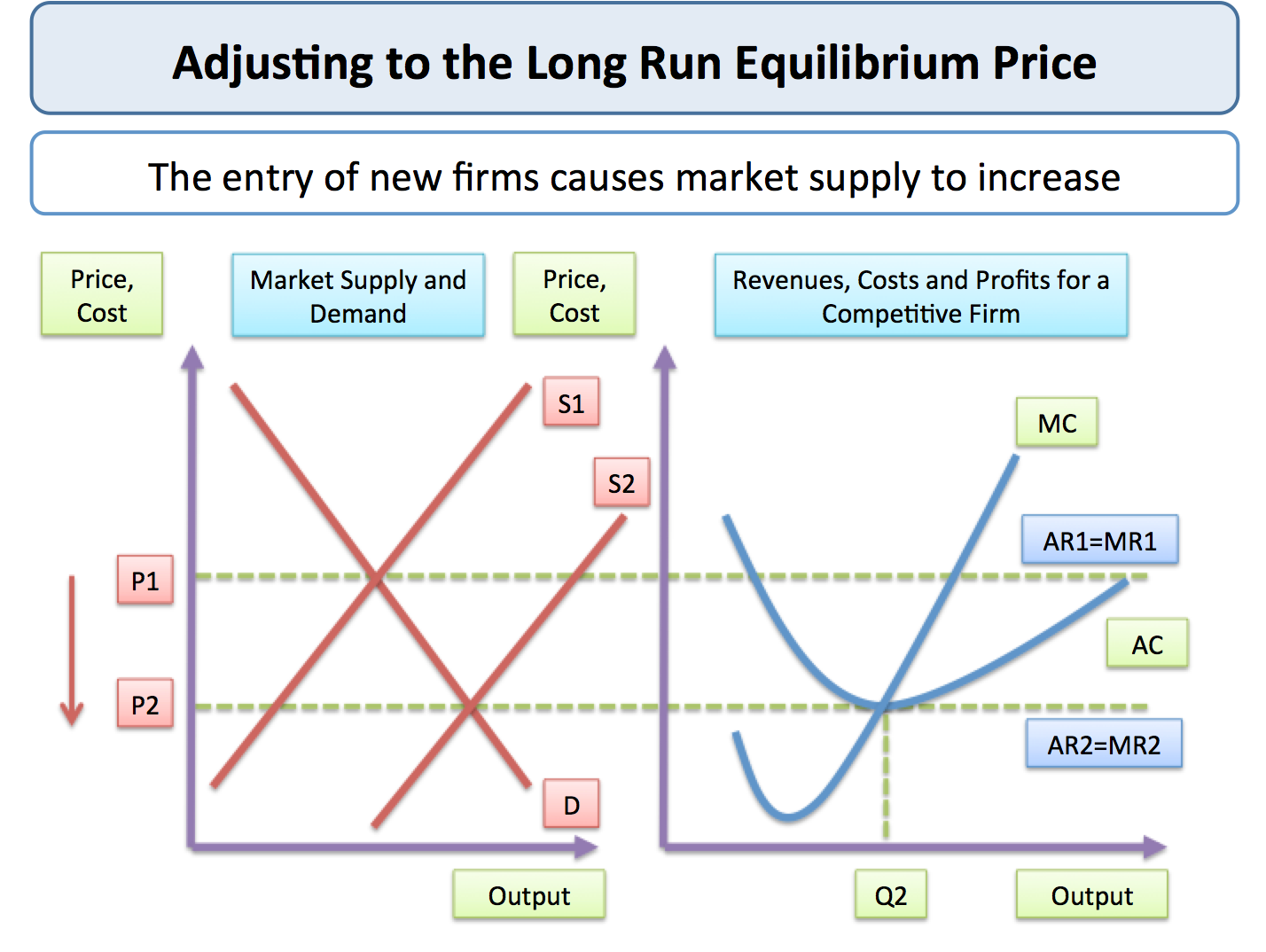


If the price continues to fall, the firm will produce lower quantities as long as the price stays above the AVC. As the price falls, profit will fall but the firm will continue to produce where MR=MC. If the market price is above the AVC, the firm will produce the quantity where MR=MC. The minimum point on the AVC correlates to the lowest price a firm would be willing to accept. The number of firms can only change in the long run.įirm’s supply curve: Below the ATC there is an average variable cost curve (AVC) that isn’t always drawn in. Note: Firms cannot enter or exit the market in the short run. When there are economic losses in the short run, firms exit the market in the long run which shifts the market supply curve to the left, increasing price and MR=D=AR=P until the firm breaks even. On the graph, when firms enter the market it shifts the market supply curve to the right, decreasing the market price and MR=D=AR=P until firms break even. In the end, low barriers to entry (and exit) mean competitive markets earn zero economic profit in the long run. When firms are earning economic losses, firms exit the market (as resources will be more profitable elsewhere) in the long run, causing prices to rise until economic losses are zero. When firms enter the market, prices fall and economic profit goes to zero. That means, when firms are earning economic profits, competing firms seek that profit and enter the market in the long run. In perfectly competitive markets, barriers to entry are low.

Barriers to entry can be high start up costs, customer loyalty, government regulation, etc. Barriers to entry: A barrier to entry is anything that makes it difficult for entrepreneurs to enter the market and compete.


 0 kommentar(er)
0 kommentar(er)
